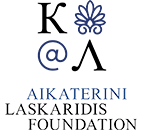Asia Minor (1304 Subjects)
View of the Ancient Theatre and the colonnade in Soloi of Cilicia (later Pompeiopolis).
The remaining part of the colonnade in Soloi of Cilicia (later Pompeiopolis), seen from the theatre. The columns framed the way leading from the city to the port.
Landscape at Berdan river (ancient Cydnus) in Tarsus, Cilicia.
View of Tarsus in Cilicia.
Houses and gardens outside Tarsus in Cilicia.
Banana tree and other vegetation in the gardens outside Tarsus, Cilicia.
View of the Dardanelles strait. In the foreground, Kilitbahir castle, in the background, Sultaniye castle.
View of Izmir, with Kadife castle in the distance.
The church of Saint Polycarpus at Izmir.
Volcanic minerals discovered in Istanbul, around the area of the mythic Symplegades or Clashing Rocks: 1) The western side of Yum Burnu promontory, on the norheastern shore of the Bosporus, at the junction with the Black Sea. 2. Agglomerate of volcanic minerals with porphyry veins from Kadiköy (anc. Chalcedon), discovered by the author at Buyuk Liman, on the norheastern shore of the Bosporus. 3) Porphyry from Kadiköy (anc. Chalcedon). 4) Basalt from Buyuk Liman, norheastern shore of the Bosporus. 5) The eastern side of the northeastern end of the Bosporus, at the junction with the Black Sea.
Map of the Bosporus and its surroundings.
The fortresses of Europe and Asia on the Bosporus. In the foreground, the fountain of Küçüksu or fountain of Mihrisah Sultan, near the location of Sweet Waters of Asia (today Göksu Deresi).
Map of Italy and the eastern Mediterranean sea.
Leisure scene at the location of Sweet Waters of Asia.
View of the surroundings of Bursa.
Leisure scene at Pinarbasi, a neighbourhood of Bursa. A story teller entertains the public.
Map of Europe, the Arabian peninsula and Asia, showing the author's itinerary.
Greek and Jewish women in traditional costume. View of Stroboli volcano. Lighthouse at the bay of Messina, Sicily. View of Izmir.
Affluent women of Istanbul. Panoramic view of Istanbul. Women of the imperial harem.
Greece and Asia Minor in the era of the Trojan War, according to the anonymous works traditionally attibuted to Dictys Cretensis (“Dictys Cretensis Ephemeridos belli Trojani”) and Dares Phrygius (“De excidio Trojae historia”).
Map of the Roman empire in the era of Julius Cesar, based on the descriptions by Julius Caesar himslef and by Silius Italicus.
Map of Greece and of the Empire of Croesus, according to Herodotus.
Map of the campaign of Agesilaus II of Sparta against the Persians, based on the description of Xenophon.
Map showing the retreat of the Ten Thousand according to Xenophon.
Map showing the conquests of Demetrius I Poliorcetes.
Map of the Eastern Mediterrranean showing the places mentioned in the Old and New Testament.
Map of the places mentioned in Eusebius' Ecclesiastical History.
Title page. Relief, probably from Lycian tomb at Xanthus, Asia Minor.
Panoramic view of Xanthus, Asia Minor.
Panoramic view of Xanthus, Asia Minor.































